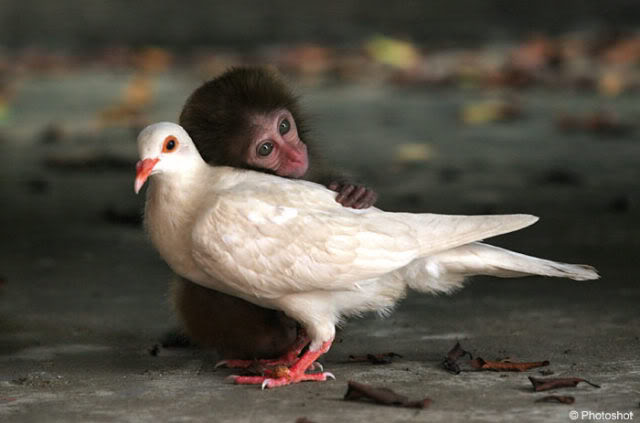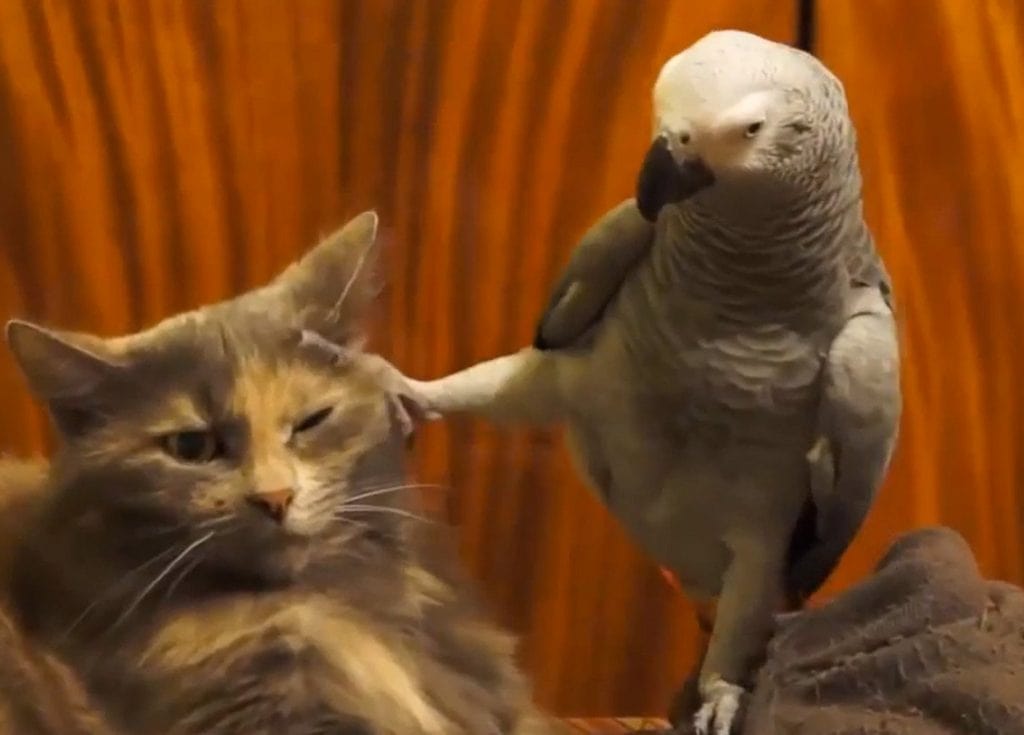Time to look at a new “how to apologize” study!

Be like this monkey.
The paper, called “An Exploration of the Structure of Effective Apologies,” will be published in the May 2016 issue of Negotiation and Conflict Management Research. (You can read the abstract online.) The academics — lead author Roy Lewicki, professor emeritus of management and human resources at The Ohio State University’s Fisher College of Business; Robert Lount, associate professor of management and human resources at Ohio State; and Beth Polin, assistant professor of management at Eastern Kentucky University — presented fictional apologies to 755 people. They found that the best-received apologies contained all six of the following elements:
1. Expression of regret
2. Explanation of what went wrong
3. Acknowledgment of responsibility
4. Declaration of repentance
5. Offer of repair
6. Request for forgiveness
But all six elements are not created equal! The researchers found that the most important, by far, was acknowledgment of responsibility. And this happens to be the one that a lot of folks have trouble with. As we’ve discussed, most of us don’t like to take ownership of a screw-up because to do so often conflicts with our self-image as a good person. Consciously or not, we want there to be extenuating circumstances, or we want the other person to be responsible for triggering our bad behavior. We loathe saying “I screwed up; I own that” because we loathe believing it. And yet — it’s key to authentic apologies.

Don’t be a weasel.
The second most important element, the study says, is the offer of repair. Here at Sorrywatch, we tend to use the phrase “try to make things right” rather than “offer of repair,” because to us, there are actually two aspects to making things right: One is rectifying the situation directly with the person you hurt (hey, offer to dry-clean the innocent bystander’s shirt you hurled your red Solo cup of tequila on in your tipsy emphatic gesturing; send flowers; make a donation to a charity the person cares about); the other is explaining how you’ll be damn sure you won’t screw this up again and hurt someone else.

Also don’t be this guy.
Yes, you need to make a legit effort to mend the situation with the person you wronged, but you also need to preemptively make it right with all future people you could wrong. So if you were a tequila-tosser, part of your apology should include a vow to be much more careful in the future. (And if this is not your first or 17th offense, you might also use the incident as the impetus for rehab…and be sure to inform your last victim.) Or if, say, you or someone in your organization said something racially or ethnically insensitive, or if, I dunno, you asked a breastfeeding mother in your establishment not to “do that” here,” it’s not enough to make a gesture toward the person you wronged. You need to send your staff a memo about what the rules of civilization and good conduct are, and tell the person you hurt that you and everyone you work with will undergo sensitivity training…and then actually follow through. You have to do your level best to make reparations on both a micro and macro level.

Make amends to EVERYONE.
The professors found that the third most effective element was essentially a tie among expression of regret, explanation of what went wrong and declaration of repentance. Now, the way Lewicki and company’s studies were structured, participants read pre-written hypothetical apologies and rated them. We’ve found that in real-world apology situations, “explanation of what went wrong” can get you in a lot of trouble. In real life, explanations often sound a lot like excuses. As we’ve said, if your motives need clarifying, it’s fine to quickly say why you did the thing you did. But don’t fall into the trap of justifying what you did or defending yourself or offering up extenuating circumstances.

Let me explain. (NO.)
The least vital element of an apology, the authors found, is asking for forgiveness. Which is convenient since we think you shouldn’t ask for forgiveness at all. It puts the other person on the spot. It doesn’t give them time to process your apology. It has the (usually unintended but still sucky) effect of “let’s move on,” which is not your decision to make. We think forgiveness is a gift for the other person to grant; it’s not something you get to ask for. As far as we’re concerned, you’re obligated to apologize as quickly as you can; the other person is not obligated to forgive, and it shows a lot of chutzpah for you to ask. If you want forgiveness and you sense you don’t have it, you keep groveling. If the other person wants to process, they will.

Not yet.
Finally: The two experiments the researchers found a distinction between apologies made for a mistake made out of incompetence and a mistake made out of a lack of integrity. (The study subjects were presented with a hypothetical job applicant who made a mistake because he wasn’t familiar with a tax code, and a hypothetical job applicant who filed an incorrect tax return on purpose.) Study participants were much more likely to forgive the person who acted out of ignorance than out of calculation.

Don’t be evil.
This helps explain why so many celebrity and political apologies ring false — we know they’re apologizing for something they knew full well was wrong when they did it.

When I was a child, my father taught us a very old hymn which I loathed which began, If I have wounded any soul today… Every time it was sung, my sharp little child-mind would trip over that “if.” I silently sang it as “Since.”
“If” can be such a tacky word. I have begun to call it ‘The Celebrity If.’ It’s the If which says, I am indeed above and far removed from this petty situation, but IF anyone is upset by the imbroglio, I will condescend and address this pettiness if I must.” I love that this study bears out my the instinctive knowledge of my child-mind (and my instinctive judgment of my father but That Is Another Topic Entirely). Also, I love the ring-tailed lemur in this far too much. Those animals were made to be anthropomorphized, clearly.
I like “The Celebrity If”!
I have found in professional situations that a person often forbears to apologize because they believe that doing so will undermine their authority and/or the credibility of themselves or the institution. I also believe that sometimes that is true, but the apology should be made anyway, because in the bigger picture doing so upholds our collective faith in each other.
I remember once where a benefits enrollment software system I was providing to Adobe was rolled out with a bug that caused some people to be overcharged a dollar or less per year on life insurance. The bug got through because I didn’t test the code sufficiently. The HR folks refused to announce it to the employees and just let it stand, intending to refund the money on a case-by-case basis if anyone complained. I argued (almost fought) with them about this and their view was very firm that announcing the error would dos great harm by undermining the employees faith in the system. I was very upset about it, but did not go around announcing the problem. Maybe I should have.
You were right and they were wrong. In the long run (not even that long a run), announcing the problem increases trust in the system. “They would tell us if there was the least little problem.”
But it sounds like it wasn’t up to you.
I’m with Sumac — you were right. But don’t beat yourself up; the buck didn’t stop with you. (One of my fave apologies on the site is from a guy at the top when the Space Shuttle Columbia exploded. The buck DID stop with him, and when he discovered he’d been wrong about the cause of the disaster, he apologized to the public and to the staff whose work had been wrongfully implicated. Unlike him, you weren’t at the top of the food chain, and you did what you could without losing your job.)
I’m glad to know there’s a rehab program for overemphatic gesturers. Do you have a discreet website?
It can be counter-productive to involve overemphatic gesturers in a 12-step program. Just finding a space where they don’t evict a group after the jams are kicked out once or twice is difficult. Look for a 12-twitch program. Or one of the eyebrow linguistics therapies.